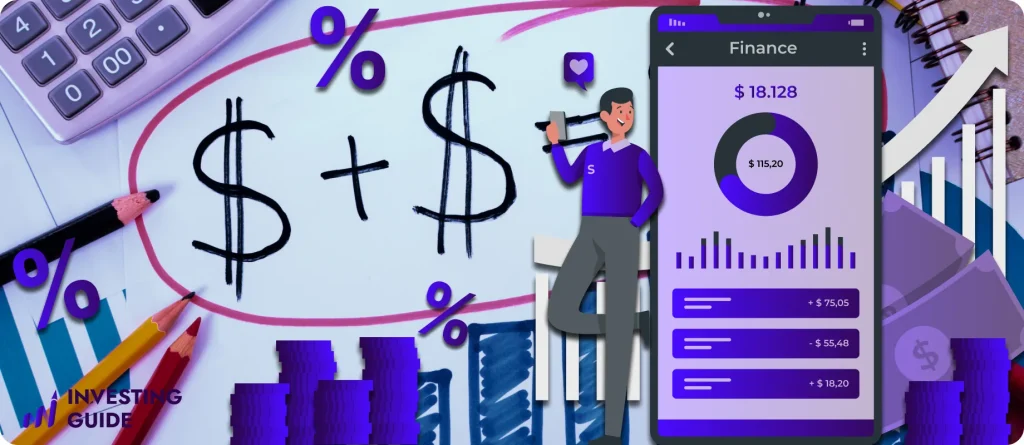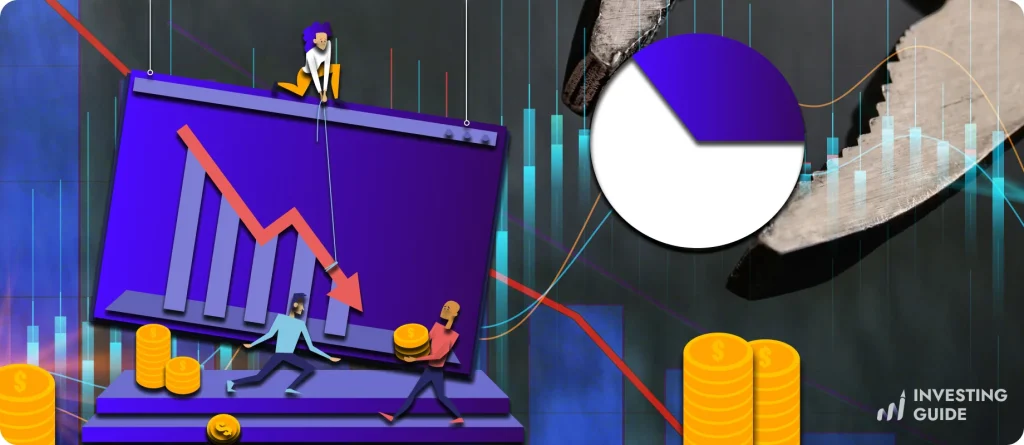Claire is an experienced financial analyst with strong analytical skills. With her expertise and focus on thorough market research, Claire ensures individuals in the financial landscape are well-informed. Often in an engaging writing style, her content helps traders quickly grasp the market dynamics. As an Associate Editor of financial news at InvestingGuide, she provides an original analysis of the financial markets and economy. You’ll be at joy reading her flawlessly written content. She has written hundreds of pieces that simplify complex financial topics in plain language.
We may receive compensation from our partners for placement of their products or services, which helps to maintain our site. We may also receive compensation if you click on certain links posted on our site. While compensation arrangements may affect the order, position or placement of product information, it doesn’t influence our assessment of those products.
Interest rates lie at the very heart of the economy, dictating everything from the cost of borrowing to the value of investments. In the UK, the rate of interest changes has more often than not headlined newspapers and stirred debate over the impact of such decisions on businesses, households, and markets. Whether you are a frequent investor or somebody looking to understand how these changes in interest rates shape financial decisions. In this case, it is time we break it down for you. This is everything from how UK interest rates work and their impact on various markets.
Understanding Interest Rates

Interest rates can be defined as the cost of borrowing money. When one is borrowing, he or she pays back the actual amount lent plus an additional percentage, which is the interest. This percentage is determined by the central bank, which, in the UK, is the Bank of England.
The Bank of England sets the base rate, which dictates how much the banks charge their customers. With a high base rate, it becomes expensive to borrow, and with a low one, it’s cheap. For savers, changes in interest rates determine how much they will earn on their deposits. These rates also affect inflation, unemployment, and the general economic growth of the country.
Overall, interest rates are the lever used to regulate the economy. When the economy is overheating and inflation is rising, the rates are raised to cool things off. And when growth is slowing, they are lowered to stimulate spending and investment.
The Mechanics of Interest Rate Changes

The Monetary Policy Committee (MPC) of the Bank of England meets every month to consider the base rate and to set it. It would take into consideration a raft of factors: inflation data, employment figures, and global economic trends, among others.
When the MPC increases rates, it sends a signal to banks to raise the rates they offer on loans and mortgages. This also impacts government bonds, corporate borrowing, and even foreign exchange rates. A reduction, on the other hand, works the opposite way, aiming to stimulate spending by making borrowing cheaper.
These changes do not directly and immediately transmit their way through the economy. It takes several months for the rate changes to completely work their way into consumer behavior, business decisions, and market fluctuations. For example, a homeowner on a fixed-rate mortgage won’t feel it, but the same homeowner on a variable rate will notice increased monthly payments as soon as rates rise.
Impact on Different Markets
Changes in interest rates bring about changes in the mood of the stock market. With increased rates, the cost of borrowing for companies increases, often shrinking their margins of profit. This makes their shares less attractive to investors. For example, sectors like real estate and utilities, which are highly dependent on debt, may see sharp declines.
On the other hand, lower rates are usually good for stocks. Companies can easily borrow cash to invest in their growth potential. Lower rates also favor typical growth sectors such as technology and retail. During periods of low interest rates, investors shift their money to equities in search of better returns on savings accounts or bonds.
Interest rates have an inverse relationship with the bond market. When interest rates go up, existing bonds lose their value since new bonds pay better. This could easily create volatility, particularly with long-term bonds.
Conversely, when rates fall, bond prices rise as investors flock in to lock in the higher yields from older bonds. This relationship makes bonds very attractive during periods of uncertainty because rates are expected to head lower as central banks cut rates.
In the UK, interest rates changes have a direct impact on the housing market. With higher rates, mortgages are costlier. Prospective buyers may postpone buying plans, ultimately leading to lower growth or declines in property prices.
However, when the rate is low pace, that acts as a catalyst for the housing sector. Cheap mortgages attract first-time buyers along with investors, which ultimately pushes demand and home prices up.
Interest rates have a significant effect on the value of the GBP on international currency markets. High rates attract foreign investors who seek higher returns, thus appreciating the pound. It is what is referred to as the “carry trade,” whereby investors borrow in low-interest currencies and invest in those with higher yields.
The opposite happens when the rates are cut. When investors pull out seeking better opportunities elsewhere, the pound weakens. This might make UK exports cheaper and more competitive but also inflates the cost of imports, adding to the upward pressures on inflation.
Final Thoughts
UK changes in interest rates send shock waves through every part of the economy of this country. It has formed market economics in profound ways through ways in which we save our money, spend, and invest it. For businesses, high interest rates come with tightened margins and sluggish growth, while more appreciable rises reach consumers through their mortgage and credit card repayments.
Understanding these changes helps us make informed decisions on choosing investments, planning major purchases, or navigating economic uncertainty. As much as rate shifts might always be beyond our control, staying updated on their mechanics and market impacts ensures we are better prepared for whatever comes next.

